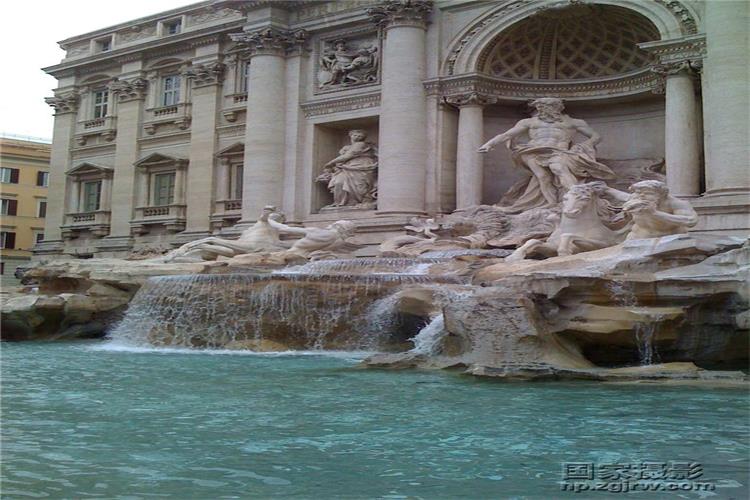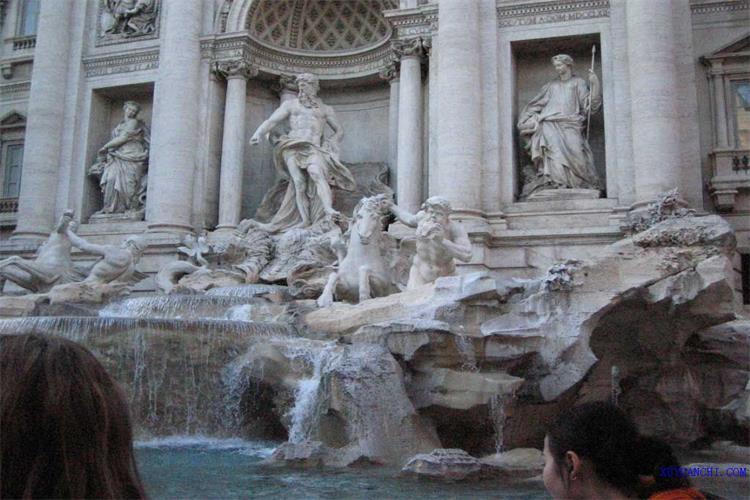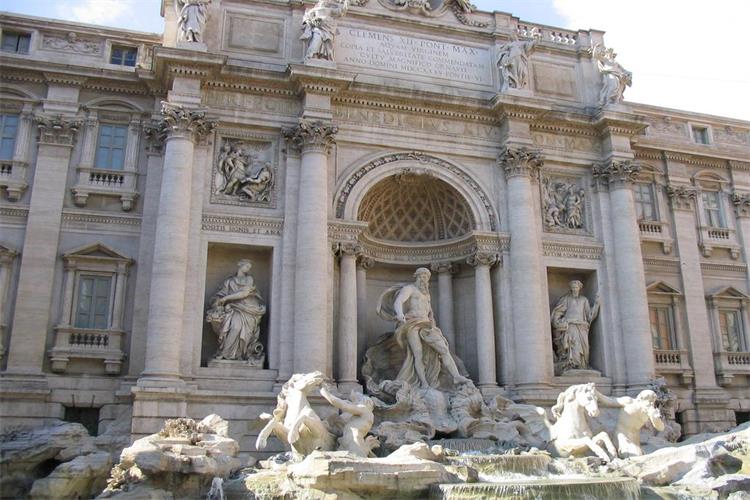绕着西方神话中的诸神,每一个雕像神态都不一样,栩栩如生,诸神雕像的基座是一片看似零乱的海礁。喷泉的主体在海神的前面,泉水由各雕像之间、海礁石之间涌出,流向四面八方,最后又汇集于一处。
这个雄伟的喷线雕刻叙述的是海神的故事,背景建筑是一座海神宫,中间立着的是海神,两旁则是水神,海神宫的上方站着四位少女,分别代表着四季。喷泉的设计者是沙维(Salvi),于1762年才完工,因此是罗马喷泉中比较年轻的一座。
许愿池是力量的象征。罗马人有一个美丽的传说,只要背对喷泉从肩以上抛一枚硬币到水池里,就有机会再次访问罗马。很多旅游者在喷泉边排着队往里抛硬币就是被这座城市迷住了的证明。喷泉的名字特雷维是三岔路的意思,因为喷泉前面有三条道路向外延伸,也正是喷泉名字的由来。
Standing as high as 25.9 meters (85 feet) wide and 19.8 meters (65 feet), the Trevi Fountain (Fontana di Trevi) has one of the most beautiful sculptures in Italy: Neptune or Oceanus in the middle and two triton, one trying to tame sea horses symbolize the cruel, and the other one blew the sea shells symbolizing peace. Ordered in 1732 by Clement XII and thirty years later his successor Clement XIII purified it.
Trevi became famous for a scene in the movie “La Dolce Vita” made by Fellini, Anita Ekberg as late-night drenched in this fountain. Also there is a legend that says, if you throw a coin into the Trevi Fountain, you will return to Rome.









